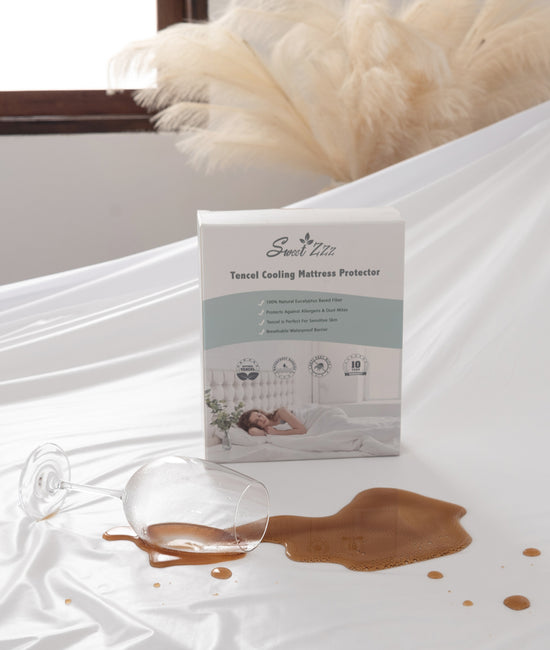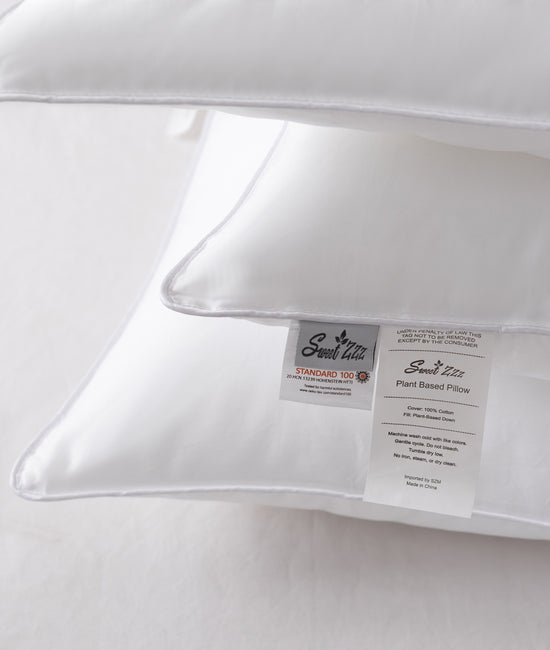Your Mattress Is Killing You!
The Hidden Dangers Lurking in Toxic Mattresses
The title might sound exaggerated, but when it comes to the potential dangers hidden in many conventional mattresses, it’s not far from the truth. Most people spend about a third of their lives on their mattresses, yet few are aware that these seemingly harmless surfaces can harbor a cocktail of toxic chemicals that can seriously impact your health.
The Toxic Chemicals in Your Mattress
Many conventional mattresses are made with materials that contain harmful chemicals, such as polyurethane foam, flame retardants, formaldehyde, volatile organic compounds (VOCs), and even fiberglass. These chemicals are often used to make mattresses more durable, resistant to fire, and cost-effective to produce. However, the trade-off is significant when it comes to your health.

- Fiberglass: Fiberglass is increasingly being used in mattresses, particularly as a fire barrier. While it’s an effective flame retardant, fiberglass can pose serious health risks if the mattress cover is removed or damaged. Tiny fiberglass particles can escape into the air, leading to respiratory issues, skin irritation, and eye damage. Once released, fiberglass particles can be extremely difficult to remove from your home, contaminating your living space and potentially causing long-term health problems. Experts advise caution when purchasing mattresses that use fiberglass as a fire barrier, as the risks often outweigh the benefits.
- Polyurethane Foam: This material is commonly used in mattresses for its cushioning properties, but it’s derived from petroleum and can emit harmful VOCs. According to the U.S. Environmental Protection Agency (EPA), VOCs can cause a variety of health issues, including eye, nose, and throat irritation, headaches, and even damage to the liver, kidneys, and central nervous system. Long-term exposure to VOCs has been linked to cancer.
- Flame Retardants: To meet fire safety standards, many mattresses are treated with chemical flame retardants, which can be toxic. Some of the most commonly used flame retardants have been linked to serious health issues, including endocrine disruption, neurodevelopmental delays, and cancer. The Consumer Product Safety Commission (CPSC) has raised concerns about the potential risks associated with these chemicals, particularly for children and pregnant women.
-
Formaldehyde: Often used in mattress adhesives, formaldehyde is a known carcinogen. The National Cancer Institute (NCI) states that exposure to formaldehyde can cause respiratory issues, skin irritation, and an increased risk of developing certain types of cancer.

- Phthalates: These chemicals are used to make plastics more flexible and are often found in mattress covers. According to the Centers for Disease Control and Prevention (CDC), phthalates have been linked to a variety of health problems, including hormone disruption, reproductive issues, and asthma.
The Cumulative Health Impact
The dangers of these chemicals are not just theoretical. Prolonged exposure to the toxic substances in mattresses can have cumulative effects on your health. For instance, inhaling VOCs released from your mattress every night can lead to chronic respiratory problems, including asthma and bronchitis. The persistent exposure to flame retardants can disrupt your hormone balance, leading to a host of endocrine issues, including thyroid problems and reproductive disorders. Moreover, the carcinogenic potential of chemicals like formaldehyde means that the risk of developing cancer increases with prolonged exposure.
What You Can Do
Given the serious health risks associated with toxic mattresses, it’s crucial to make informed choices when selecting a mattress. Opting for mattresses made from organic or natural materials can drastically reduce your exposure to harmful chemicals.
For example, the Honey Hybrid Organic Mattress, a bed with none- of the above mentioned toxins, is crafted with organic latex, organic cotton, and wool, avoiding the need for toxic flame retardants, synthetic materials, and fiberglass. The use of organic materials ensures that the mattress is free from harmful VOCs, formaldehyde, and other dangerous chemicals. This mattress not only provides a healthier sleep environment but also offers excellent support and comfort, ensuring you don’t have to compromise on quality while protecting your health.
Final Thoughts
Your mattress is more than just a surface to sleep on—it’s an environment where you spend a significant portion of your life. Ensuring that this environment is free from toxic chemicals is crucial for your long-term health. By choosing a mattress made with organic, non-toxic materials, you can protect yourself and your family from the hidden dangers lurking in conventional mattresses. Remember, your mattress should be a place of rest and rejuvenation, not a source of health risks.
For more information on the dangers of toxic chemicals in mattresses, you can explore resources from the EPA, CPSC, and NCI.








